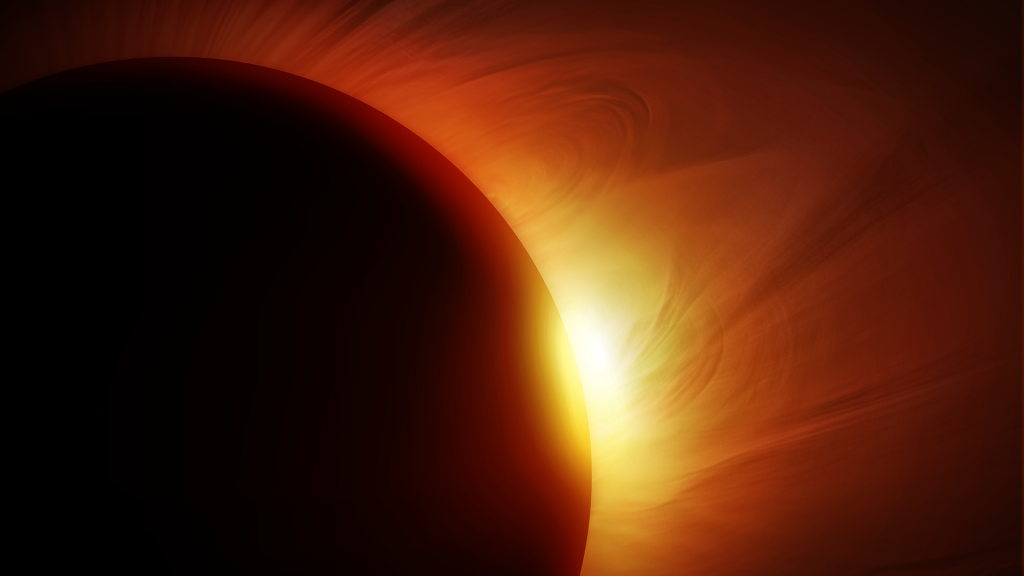Don’t look now, but a full solar eclipse is on the horizon for April 8. And while it may not be a good day to catch some rays, sky watchers will be treated to a rare astronomical event. The moon will completely block the face of the sun and cast a shadow over a swath of the planet, plunging bright afternoon skies into midnight-like darkness.
More than 34 million Americans are expected to witness the approximately two-hour celestial show—the first eclipse since 2017. It will enter the United States in Texas, exit in Maine and should start to be visible in the D.C. area around 2 p.m. But with the moon only partially covering the sun overhead, Washingtonians looking for a dramatic view will have to seek out projection screens at gatherings like the Solar Eclipse Festival on the National Mall. The GW Office of Student Life will also host an Eclipse@Elliott event with snacks and free glasses to watch the eclipse.
Meanwhile, NASA experts warn not to look directly at the sun during the eclipse and stress that protective eye equipment is a must. Viewing any part of the sun through a camera lens, binoculars or telescope without a special filter secured over the front of the optics will instantly cause severe eye injury. NASA also shared tips on how to view the 2024 total solar eclipse safely.
There have been 15 solar eclipses in the United States in the past 150 years, with the next one not expected until August 2044. As the latest eclipse approaches, GW Today spoke with Physics Department Chair Alexander van der Horst about what will happen in the sky—and how we will experience it on Earth.
Q: Our last full solar eclipse was in 2017. How will this one be different?
A: It is going to be very different—and it could be extra exciting for people to see.
The 2017 eclipse was during a period called a solar minimum, when the sun is not very active. We still saw the corona—the outer atmosphere of the sun—in this nicely homogeneous, fairly simple eclipse.
But now we’re very close to a solar maximum. And that means you could see much more structure. You may be able to see some solar prominences—these big loops coming outward from the sun’s surface. If we’re really lucky, we may even be able to see a coronal mass ejection—material flying off the surface of the sun into the corona.
Q: Will it be longer or shorter than the 2017 eclipse?
A: It will last much longer. In 2017, the totality—the time when the moon is completely blocking the surface of the sun—was just over two minutes depending on where you were in the U.S. Now, when the eclipse comes into the southern part of the U.S., the totality will be almost 4.5 minutes. And when it leaves through Canada, it will be about 3.5 minutes. That’s a very long time.
The reason is: The orbits of the Earth around the sun and the moon around the Earth are not perfectly circular. They’re ellipses, which means those distances change over time.
If the moon is in its closest orbit around the Earth and if the Earth is in its farthest orbit around the sun, then you will have the most dramatic total eclipse.
That’s not quite what will happen this time. The moon will be relatively close to the Earth’s orbit, but the Earth will not be at its farthest away from the sun. But it will be far enough away to have a longer eclipse.
In the most optimal situation, there could be a more than seven-minute eclipse. But that is very, very rare. That’s not going to happen for a few hundred years. So we should be happy with four minutes.
Q: Why don’t they happen more frequently?
A: That’s a good question. After all, the moon is always going around the Earth. So why aren’t there eclipses every 28 days?
It is because the orbit of the moon is slightly tilted compared to the orbit of the Earth around the sun. They have to be in a perfect line for you to actually see the full eclipse—which only happens once in a while.
And then there’s also a difference between a total eclipse and an annular eclipse. That’s when the moon doesn’t cover the entire surface of the sun. It still leaves the outer edge visible as a little circle or “annulus” around the moon.
So it’s a fairly rare occurrence. For any given spot on Earth, on average, there is an eclipse about every 400 years. And the next one on the contiguous U.S. is not for two decades. There will be one in Alaska in 2033. So maybe children that are born at this eclipse will be undergrads studying astronomy at GW for the next one.
Q: Do other planets have solar eclipses? Or just Earth?
A: Mercury and Venus can’t have eclipses because they don’t have moons. Mars has eclipses because it has two moons, but they are too small to create total eclipses. The large gas planets—Jupiter, Saturn, Uranus, Neptune—can have total eclipses, because they have many moons and the sun is far away from them so those moons can block the entire light from the sun, just like in a total solar eclipse on Earth.
Q: The public loves eclipses, but what are they like for scientists? Is it the Astronomer Super Bowl?
A: I think, for astronomers, it is as magical a phenomenon as it is for many people.
This will be my third total eclipse. The first time was in 1999 when I was an undergraduate in the Netherlands, and I went to see a total eclipse in northern France. There was a moment when I was on a hilltop looking into a valley, and I could see this shadow sweeping into the valley as the eclipse was beginning. I remember being very emotional at the time.
As astronomers, during an eclipse we are seeing something happening right in front of us—in action!—where normally we would have to look at it through a telescope or download data.
It’s a great moment that the whole public engages with at the same time. That makes it extra nice.



